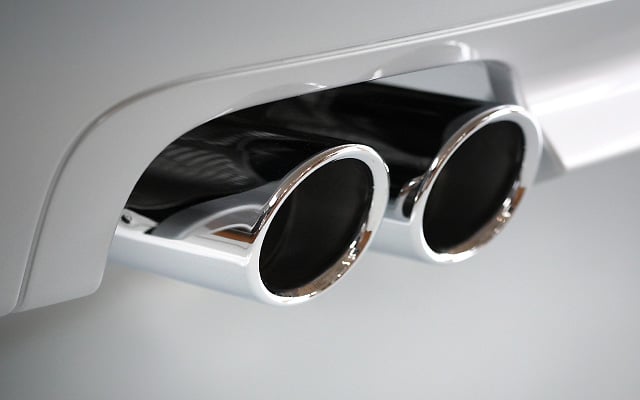Carbon dioxide emissions are directly related to fuel consumption. If you want the best economy then start by choosing the right car for your needs.
- People carriers make sense if you're going to use all the seats. But a smaller car is more economical if there's just one or two of you.
- Weight's more important than engine size when it comes to how much fuel a car uses – a heavy car needs a lot of fuel to get it going from a stop but a big engine in a small car can be economical.
- Four-wheel drive (4x4) will use more fuel than two wheel drive.
For a smooth drive around town on in heavy traffic, it's tempting to go for an automatic but this can have a big effect on fuel consumption:
- Traditional autos may use 10% more fuel than a manual while cars with a constantly variable transmission (CVT) use around 5% more.
- 'Automated manual' transmissions on the other hand can be more economical even than a manual. Clever hydraulic and electronic systems take care of the clutch operation and gear changes.
- Modern semi-automatic features like button- or paddle-operated gear change and automatic clutch control can help you use less fuel.
- At motorway speeds fuel consumption evens out and there's not much difference between manuals and automatics of any type.

Exhaust emissions
In theory, you should be able to burn a 'hydrocarbon' fuel (petrol, diesel, gas etc) with air in an engine to produce just carbon dioxide (CO2) and water (H2O). The rest of the exhaust would be the nitrogen (N2) that came in with the air.
Unfortunately, the fuels we burn are made up of hundreds of differently structured hydrocarbons that burn in different ways and at different rates. In practice this means that your exhaust contains some that were partially burned, some that reacted with others and some that reacted with the nitrogen.
The amount of carbon dioxide (CO2) produced is directly related to fuel consumption which is why car manufacturers have done a lot to improve new car fuel economy and why car tax rates have been based on official CO2 emissions figures.
There's less you can do to affect toxic emissions apart from trying to run the newest car you can.
Euro emissions standards
New cars have to meet European emissions regulations.
- The so-called ‘Euro 1’ standard came into force in 1992 and set limits for petrol car carbon monoxide (CO) emissions that could effectively only be met by fitting a catalytic converter in the exhaust system.
- Each new standard is tougher than the last. Euro 5 came in in 2009 and effectively required diesels to be fitted with a diesel particulate filter in the exhaust to limit soot emissions.
- We're now up to Euro 6 which came into force in 2014 and sets broadly similar standards for both petrol and diesel.
- The newer the car, the better for the environment.
Fuel choice
When you compare cars of similar size and performance:
- Petrol cars generally use more fuel than diesel, and produce more carbon dioxide (CO2).
- Petrol cars produce fewer toxic emissions.
- Diesel cars generally use less fuel than petrol cars, so give out less CO2, but will produce more toxic emissions depending on the ‘Euro’ standard that applied when the car was new.
- LPG (Liquid Petroleum Gas) gives off lower toxic emissions than Diesel and older (pre-Euro 4) petrol engines, but fuel consumption isn’t as good.
What's in your exhaust?
These are the main exhaust products and their effects on the environment and our health.
- Nitrogen (N2) – no adverse effects
- Oxygen (O2) – no adverse effects
- Water (H2O) – no adverse effects
- Carbon Dioxide (CO2) – non-toxic but contributes towards acidification of our oceans and one of the most important greenhouse gases. Government policies around the world are aimed at reducing CO2 emissions to combat global warming.
- Carbon Monoxide (CO) – results from incomplete combustion of fuel. CO reduces the ability of blood to carry oxygen and can cause headaches, respiratory problems and, at high concentrations, even death.
- Nitrogen Oxides (NOx) – produced in any combustion process, NOx emissions are oxidised in the atmosphere and contribute to acid rain. They react with hydrocarbons to produce low level ozone which can cause inflammation of the airways, reduced lung function and trigger asthma. They also contribute to the formation of particulate matter.
- Sulphur Dioxide (SO2) – sulphur occurs naturally in the crude oil from which petrol and diesel are refined. It forms acids on combustion leading to acid rain and engine corrosion. It also contributes to the formation of ozone and of particulate matter.
- Hydrocarbons (HC) – HCs are emitted from vehicle exhausts as unburnt fuel and also through evaporation from the fuel tank, from the nozzle when you fill up and also at stages through the fuel supply chain. They react with NOx in sunlight to produce photochemical oxidants (including ozone), which cause breathing problems and increased symptoms in those with asthma.
- Benzene (C6H6) – occurs naturally in small quantities (less than 2%) in petrol and diesel, Benzene is emitted from vehicle exhausts as unburnt fuel and also through evaporation from the fuel system although modern fuel systems are sealed and have carbon canisters to hold the vapours. Benzene is toxic and carcinogenic and long-term exposure has been linked with leukaemia.
- Particulate matter (PM) or soot – particulate matter is partly burned fuel associated mainly with diesel engines and is also formed by the reaction between other pollutants. Smaller particles can pass deep into your lungs causing respiratory complaints and contributing to the risk of developing cardiovascular diseases. Modern diesel cars are fitted with Diesel Particulate Filters (DPF) to stop these particles passing into the atmosphere.
11 January 2017
